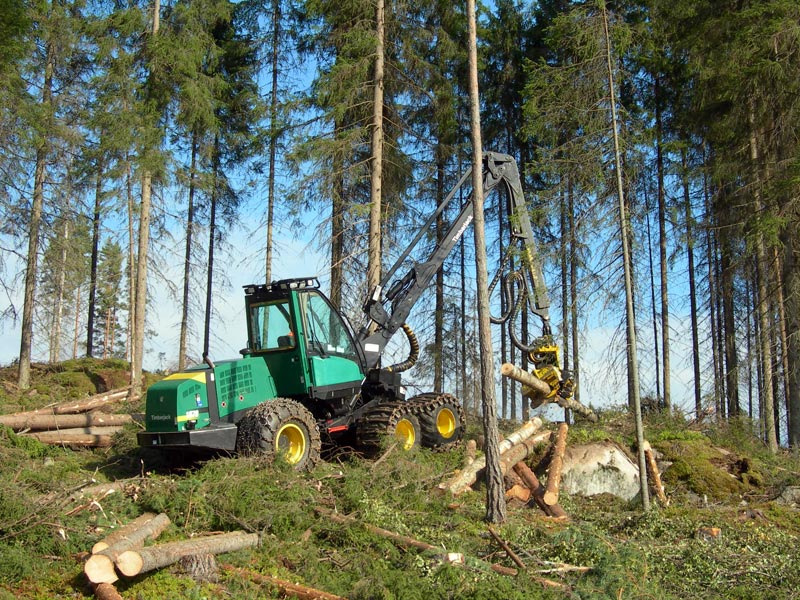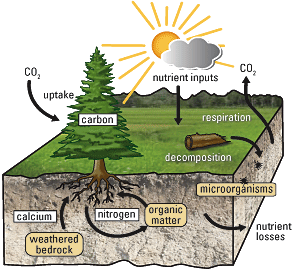Forest ecosystems are complex, involving the ways in which trees interact with both other living organisms and their physical environment. These interactions incorporate how trees communicate with other trees and the relationship of the trees with animals, including humans. This page tells you all about some parts of the forest ecosystem in Crandall Park.
Effects of Logging on Biodiversity
Forest biodiversity is an important component to maintaining forest health. In 2008, a group of researchers led by Robert McDonald performed a study where they looked at the effects of minimal, frequent logging activity (at about 1% intensity) on plant diversity. This study was important because it showed that some logging can actually boost plant growth and area diversity. In areas with rich soils, they saw almost a doubling of plant biodiversity with low-intensity logging. Areas with poor soil did not see this rapid regeneration, and their plant biodiversity saw minimal changes. Read more →
Lichen
Lichens are often mistaken as mosses or fungi but are their own group with thousands of species. Lichen are actually a fungus living closely with another organism (either algae or cyanobacteria). Lichens are also used as shelter or food by many animals including humans. Read more →
Nutrient Cycling
The nutrient cycle is a system where energy and matter are transferred between living organisms and non-living parts of the environment. This occurs as animals and plants consume nutrients found in the soil, and these nutrients are then released back into the environment via death and decomposition. In forest environments, there is an exchange of nutrient elements such as hydrogen, nitrogen and oxygen among the soil, plants and animals living within the environment. Read more →
Tree Talk
The trunks and leaves of trees you see only begin to tell the story. What you can’t see are the underground roots, make up a vast and complex interconnected system. Though these roots are not connected to each other themselves, they are joined into a network by fungi. This creates a system of connectivity among tree roots that enables trees to communicate with each other and share information and resources. Read more →
Image Credits
Top to bottom:
"Timberjack 1070D Harverster" by Heikki Valve is licensed under CC BY 3.0
"Cladonia lichens" by Dr. Richard Murray, licensed under CC BY SA 2.0
"Carbon and Nutrient Cycling" By Bill Gibs, Courtesy of the U.S. Geological Survey
"Dicrano- Pinion, Pinus sylvestris 02" by Bartosz Cuber is licensed under CC BY-SA 3.0



